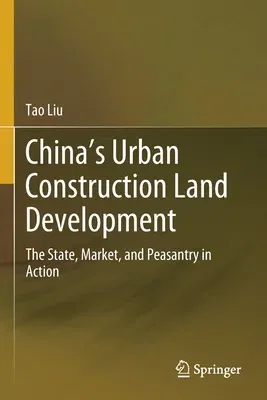This book examines the nature and internal dynamics of China's urban
construction land (UCL) development, drawing insights from the recently
developed theory of regional political ecology. Based on the author's
original research, it identifies two different types of UCL development
in China, namely top-down, formal development in the legal and regulated
domain, and spontaneous and informal, bottom-up development in the
semi-legal, poorly regulated gray domain. Presenting a systematic
analysis and comparison, it reveals a scale and speed of informal land
development no less significant than that of formal land development,
although informal land development tends to be scattered, pervasive,
difficult to track, and largely overlooked in research and policy
formation. Contrary to the popular perception of the peasantry as
passive victims of land development, this book uncovers an intriguing
dynamic in which the peasantry has played an increasingly (pro)active
role in developing their rural land for urban uses in informal markets.
Further, based on an investigation of UCL development in Beijing and
Shenzhen, it shows an interesting trajectory in which the uneven growth
and utilization of UCL are contingent upon the various developmental
milieus in different places. China's land institutions, based on an
urban-rural dual land system, are not conducive to the ultimate goal of
saving and efficiently utilizing land. Accordingly, an urban-rural
integrated land market and management system is highly advisable. The
theoretical and empirical enquiry presented challenges the perceived
notion of China's UCL development as the outcome of market demand and
state supply. Further, it argues for an inclusive treatment of the
informality that has characterized urbanization in many developing
countries, and for a reassessment of the role played by the peasantry in
land-based urbanization.

